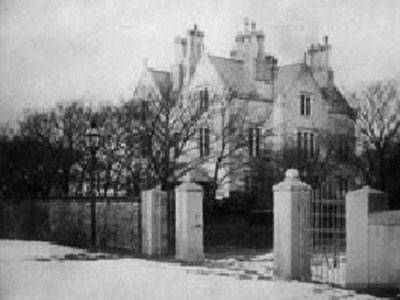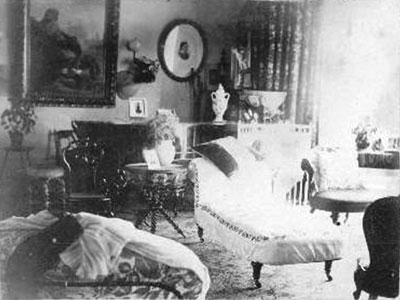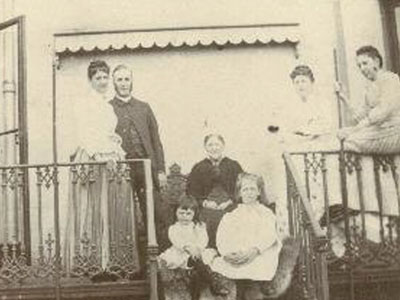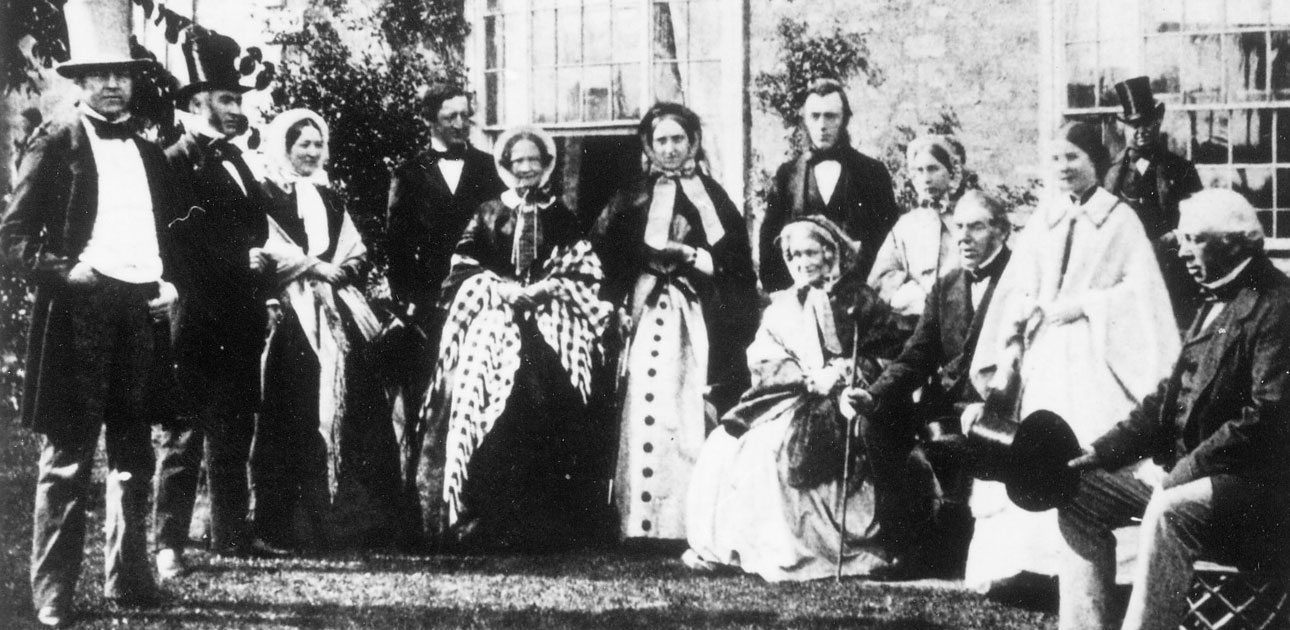 CHARLES WILLIAM HARRISON PICKERING 1815-1881
CHARLES WILLIAM HARRISON PICKERING 1815-1881
CWHP was a principle of a large international banking firm named John Henry Schroeder & Company. In 1860 he built his home, Montebello, in Birkenhead, England where he and his wife raised a family of 11 children and were generous patrons of the community.
In 1857 Cyrus Field successfully enlisted the financial help of CWHP to seek funds to build a Transatlantic communications cable and CWHP became the managing director of the enterprise. He and his wife, Elizabeth Walker descend from generations of entrepreneurs and merchants who made their fortunes from taking advantage of the opportunities of their times.
<< Back to parents, William Pickeirng & Caroline Steffens
Charles William Harrison Pickering
my Great, Great Grandparents
…. b: 9 Nov 1815, Liverpool
…. c: 5 Jan 1816, Holy Trinity, Liverpool
…. m: 15 Oct 1840, St John, Great Boughton (age 25)
…. o: 1840 Merchant
…. o: 1851 General Merchant
…. o: 1859 Corn Merchant
…. o: 1861 Corn Merchant and Financial Banker (age 45)
…. d: 2 Mar 1881, Seymour Street, Middlesex Co., Eng. (age 65)
…. b: 9 Mar 1881, St. Hillary Churchyard, Wallasey, Eng
+ Elizabeth Catherine Walker
…. b: 24 Jul 1819, Chester, Cheshire
…. c: 19 Aug 1819, St Oswald, Chester
…. m: 15 Oct 1840, St John, Great Boughton (age 21)
…. d: 02 Apr 1895, Liscard (age 76)
…. b: St. Hiliary Churchyard, Wallasey, Cheshire
………… Mother: Catharine Lightfoot
………… Father: Thomas Walker of Flookersbrook
………… Father Occupation: Tanner
………… Lived: St Oswald Parish, Chester
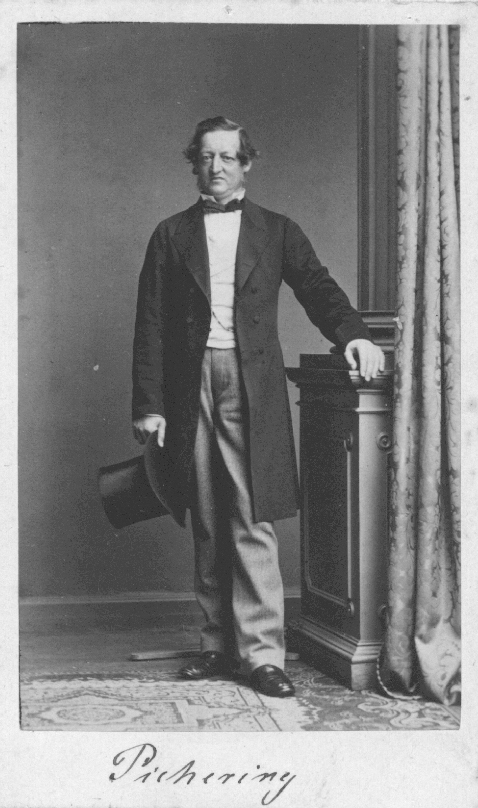
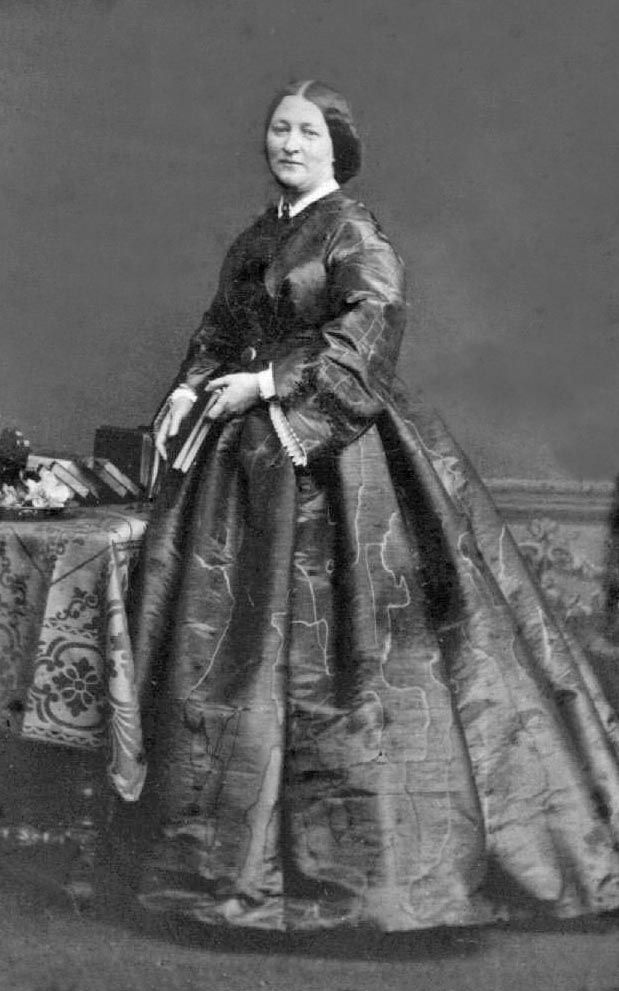
QUICKLINKS
• Pickering & Schroeder – Merchant Bankers
• Pickering & Transatlantic Cable
• CWHP Last Will & Testament
• CWHP Graves, St. Hilary, Wallasey
• Heraldry
• Ships
• Steffens / Pickering Connection
 |
CHARLES WILLIAM Pickering, 1841, Liverpool — 1928, Junction City KS Descendants:United States |
 |
KATHERINE ELIZABETH Pickering Harling, 1843, Liverpool — 1928, New Brighton, Eng. |
 |
Eugene Haynes Pickering, 1844, Liscard — 1928, East Dereham, Norfolk, Eng. Descendants: New Zealand |
 |
Emily Frederica Pickering, 1 June 1846 — btwn Jul-Sep 1846, Wallasey (age 2 mos) No Descendants [Source: J. Leece, 3 Mar 2013] |
 |
Henry Alfred Pickering, 1847, Liscard — 1928, Junction City Kansas Descendants: United States |
 |
Elizabeth Maude Pickering, 1848, Liscard — died (age 13), Eng. No Descendants |
 |
William Pickering, 1850, Liscard — 1891, New South Wales, Australia Descendants:Australia |
 |
Edith Paulina Pickering Meyers, 1852, Liscard — 1953, Ireland |
 |
Emma Pickering Weste, 1856, Liscard — 1887, Germany? |
 |
Alexander John Pickering my Great Grandfather, 1862, Liscard — 1959, Abington, Pennsylvania Descendants: United States |
 |
Frederica Valencia Pickering, 1858, Bonn GER — 1932 Wallasey, Eng. Descendants: None – Never Married |
CWHP and the Transatlantic Cable
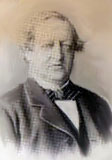 Charles was a principle of a large international banking firm named John Henry Schroeder & Company. The family built a home, Montebello, in Birkenhead, England. In 1857 Cyrus Field made his third trip to England to seek funds from the British government in order to build a trans Atlantic communications cable. He was turned down as he had been by the government in the United States but Charles Pickering convinced Mr. Field to stay an additional week during which time he was able to raise the funds privately from his own firm and that of Baron Rothchild. Charles became managing director of the enterprise.
Charles was a principle of a large international banking firm named John Henry Schroeder & Company. The family built a home, Montebello, in Birkenhead, England. In 1857 Cyrus Field made his third trip to England to seek funds from the British government in order to build a trans Atlantic communications cable. He was turned down as he had been by the government in the United States but Charles Pickering convinced Mr. Field to stay an additional week during which time he was able to raise the funds privately from his own firm and that of Baron Rothchild. Charles became managing director of the enterprise.
The cable was laid in 1858 from both ends of the Atlantic using war ships provided by the American and British governments. The cable was spliced in mid Atlantic and the first message sent on August 5, 1858 by Charles and read “Glory to God in the highest, on earth good will to men”. This message was sent just prior to Queen Victoria’s message to the President of the United States.
That same day their youngest daughter was born she was named Valencia after the island in Ireland from which the cable left the continent.

Charles William Harrison Pickering
1815 – Born 9 Nov, 1815 Soho Street, Liverpool – Father’s occupation: Merchant
1816 – Christened 5 Jan 1816, Holy Trinity, Liverpool
1825 – Living in Liverpool – Father was Mecklenberg Counsel
1839 – (age 24) Partners with J. H. Schroder & Co., Merchant Bankers
1840 – (age 25) Married Elizabeth C. Walker, St. John, Chester
1840 – Occupation: Merchant
1841 – (age 26) First child born: Charles William, Liverpool
1851 – (age 36) Living at Withenfield House, Liscard, with 5 servants
1851 – Occupation: General Merchant
1857 – Director of second attempt at laying the Transatlantic Cable
1857 – My GGGrandfather born: Alexander John, Liscard
1858 – Daughter Valentina born – Bonn on the Rhine, Germany
1859 – Pickering, CWHP, Merchant, J. H. Schroder, corn merchant
1860 – (age 45) Built and resided at Montebello until his death
1861 – (age 45) Occupation: General Merchant & Financial Banker
1861 – Living at Montebello with 7 servants
1871 – (age 55) Living at Montebello with wife, 4 children, and 6 servants
1881 – (age 65) 2 Mar 1881 died on Seymour Street, Middlesex Co., Eng.
1881 – 9 Mar 1881, Buried St Hillary Churchyard, Wallasey, Eng.
Widow
1882 – 1893 – Pickering, Mrs. E.P., Montebello
Liverpool Cotton Association
December 12, 1874.
… a letter, of which the following is a copy, was read: –
“Hugh Mason, Esq. Chairman of the Cotton spinners’ Association, Ashton-under-Lyne.
“Sir, – I have much pleasure in informing you that, at a meeting held, today, as Association, called the Liverpool Cotton Association, comprising the leading firms connected with the cotton trade, was inaugurated, and in waiting upon you with a copy of the resolutions there passed, I have, in accordance with the third resolution, to invite your Association to name two delegates to act with the committee appointed to frame the constitution, laws, &c. requisite. – Awaiting the favour of your valued reply I am, sir, yours very faithfully. (signed) C. W. H. Pickering, Chairman of the Meeting, Liverpool, December 4, 1874.
… Considerable discussion took place, and ultimately the following resoltutions were passed. … That this meeting cordially accepts the courteous invitation conveyed in Mr. Pickering’s letter, and agrees to be represented at the proposed conference by two of its members (as delegates) on the understanding that such delegates do not bind the Connon spinners’ Association to the various details and rules of the new Association until they have reported to another meeting of this committee, to be specially called for that purpose.”
The Warehousemen and drapers’ trade journal. Vo. 1-8, page 622
Ruskington and the Rectorship of the Revd. Arthur Myers, M. A. 1880 – 1893
[Only portions of this document pertaining to the Pickering family have been transcribed here.]
“My Grandfather on my Mother’s side was Charles William [Harrison} Pickering of Montebello, New Brighton, Cheshire, and also of 4 Rumford Place (his business address), Liverpool. He was a Merchant and also a Banker and was a Director of the Midland Bank, Liverpool, Dale Street Branch. His wife was a Miss [Elizabeth] Walker of Chester, whose parents owned the property whereon the Railway Station now stands, and was, I have heard a Snipe Swamp. He was also very well off and executed Trust Funds for his children whereby my Mother received some £8,010 in trust for her lifetime. He had a numerous family (12 I believe) of which 4 boys emigrated to America and became American Citizens. He employed Messrs Simpson, Harley & North, Solicitors of 1 Water Street, Liverpool as his lawyers and Mr. North (whom I knew personally) drew up his Will whereby he created a trust fund for all his children and wife, also during his life he made trusts for several of his married children, whereby he created the trust for my Mother’s marriage settlement. Personally, I [Rev. Charles A. Myers] am the sole Trustee for the Pickering Trust which is not yet completed.
“As my Mother Edith Paulina Pickering Myers died at The Cottage, Beacon Hill, Milltimber, Aberdeenshire (the home of my sister Freda Elizabeth who married a Dr. Bruce of Aberdeenshire) when she was aged 100 years and 10 months, she, at the instigation and action of my sister, was buried in the churchyard at Inverurie near my Sister’s Husband (she was a Widow) arranged apparently to evade the trouble of a journey to Ruskington where is situated the Family Vault, containing my Father’s remains. The foregoing information regarding my Parents is given as it has a very direct bearing on my Father’s Rectorship of Ruskington.
“My Father who was inducted as Rector [of Ruskington, Lincolnshire] at the age of 24 agreed with Mr. Scarr to take full charge of the Parish on the South side of the “Beck”, a stream that runs due west and east through the whole of the Village, leaving the North side to Mr. Scarr’s ministrations and this maintained until his death. At Mr. Scarr’s death, Mr. Pickering apparently bought the Vicarage holding and presented it to my Father thus consolidating the two Mediaties, of which there is no official record.
“The Church faced due East, the chancel facing the main village street and the Tower was at the West end. The entrance to the Tower was through a Roman arch, showing that the site was originally a Roman Temple. There are Dog Toothed Pillars to support the roof of considerable interest to Archaeologists, the entrance to the Chancel is apparently in Gothic Style probably erected when the church was restored by my Father largely out of his own pocket.
“My Mother [Edith Paulina Pickering Myers, 1852-1953], was responsible and actually made and designed all the kneeling mats for the Communion Rails and the Sedilia, and I can remember her making a magnificent Altar frontal for the Communion Table, which was covered with a dark red cloth and frontal, for use at Easter Tide and such High Festival occasions.
“The East End window and the Reredos were installed before I was born, but as far as I know they were given by my Grandfather Mr. C.W. H. Pickering to whose memory, I know not.
“The Organ which originally stood in front of the window facing East on the North side of the body of the Church, was originally chosen by Mr. Best the organist of the Liverpool Town Hall organ and also of the “Albert Hall” in London. He was a friend of C.W.H.Pickering in New Brighton.
“The Rectory was built by my Father with the help of Queen Anne’s Bounty in what was known as the Rectory Field. The Field stands at the corner of the Sleaford and Station Road junction. . . . The garden was designed by Frederick Myers, my Father’s Brother. The Architects were Messrs Teite (?spelling) of Liverpool, who designed and built “Montebello” the home of my Grandfather Pickering in New Brighton.”
This entire document provided by my distant cousin, Catherine Clarke, of Wellington, NZ., consists of about 15 solidly typed pages of the memories of Charles A. Myers. His stories tell the history of his town, schools, neighbors, businesses and details of everyday life. It is fascinating reading.
Montebello
was the home of my Great Great Grandparents, Charles William Harrison Pickering and his wife Elizabeth Walker. Most of their 11 children traveled to all corners of the world as they left Montebello to strike out on their own.
My Great Grandfather, Alexander John was born in this home before eventually emigrated to the United States with his brother William. The first photograph [left] has been in my family for several generations. When I “found” another branch of our family just recently I sent them a copy of this photo – and lo! and behold – they also had a copy of the same photo!
For more details and photos, visit the Montebello page on this website.
From left to right:
1st: ?
2nd: ?
3rd: Elizabeth Walker Pickering
4th: CWHP
5th: ?
6th: Emilie Steffens Pickering, wife of Peter Pickering
7th: Peter Pickering, uncle to CWHP, brother to William
8th (sitting): Caroline Amalie Friedrieke Steffens Pickering, mother to CWHP
9th (sitting): William Pickering, father to CWHP
10th (standing): CWHP sister, Valencia?
11-13th: ?
Obiturary
1895 | Death of Mrs. Pickering, of New Brighton.
It is with deep regret we record the death of Mrs. Elizabeth Pickering, who for many years resided at Montebello, St. George’s Mount, New Brighton. The deceased lady, who was in her 76th year, left the district in October last on a visit to her son-in-law at Southampton, where she passed peacefully away on the 2nd inst.
She was the widow of Mr. Charles W. H. Pickering, J.P., a former member of the Wallasey Local Board, who died in 1881. Both during the lifetime of her husband and subsequently, Mrs. Pickering was well-known for her charitable benefactions, which were none the less appreciated from the fact that they were invariably dispensed in a quiet and unostentatious manner. An appeal in a deserving cause was never made to her in vain, and it can truly be said that her loss will be acutely felt in all parts of the district.
While a liberal supporter of the whole of the Wallasey charities, Mrs. Pickering was more particularly interested in the New Brighton and Liscard District Nurse Society, of which she was one of the original promoters and of which she held the position of president at the time of her death.
The remains of the deceased lady were removed from Southampton to New Brighton on Saturday, and were on Tuesday afternoon laid to rest in the family vault at Wallasey Churchyard in the presence of a large gathering of sorrowing relatives and friends. The officiating clergy were the Rev. Canon Linton (St. Mary’s., Birkenhead), the Rev. C.H. Hylton Stewart (vicar of New Brighton), and the Rev. Stephen Gray (curate of Wallasey). An impressive choral service was conducted in the church, the choir boys, under the leadership of Mr. T. Hill, chanting the Psalms and also effectively rendering a hymn, whilst at the graveside, after the coffin had been lowered, they sang “Peace, ever peace.”
The principal mourners were Dr. and Mrs. Harling (son-in-law and daughter), Mrs. Myers (daughter), Miss Pickering (daughter), Mr. Myers (grandson), Dr. James (London), the Misses Broadbent (nieces), Mr. and Mrs. F. North, Mr. and Mrs. A Dempsey (Noctorum), Messrs. T. C. Cheesborough, G. Calthorp, T. A. Leigh, and George Clapham.
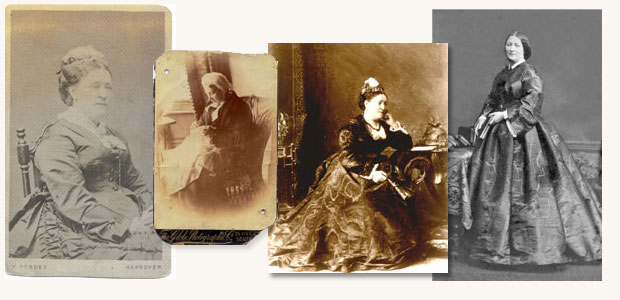
Parents of Elizabeth Walker
Mother: Catharine Lightfoot
Father: Thomas Walker of Flookersbrook
Father Occupation: Tanner
Lived: St Oswald Parish, Chester
Children of Thomas Walker and Catherine Lightfoot
…. Alice Walker, b: 28 Feb 1815, c: 24 May 1820
……….. + Charles Clarkson
……….. m: 26 Nov 1834 Yarm, Yorkshire, Eng.
…. Charles Walker, b: 8 June 1817, c: 29 July 1817
…. Elizabeth Walker, b: 24 Jul 1819, c: 19 Aug 1819, St Oswald’s, Chester
…. Thomas Walker, Innkeeper, Chester
…. Anne Walker, married John James Esq, surgeon of London* at Wallasey
Merchant Banker, Liverpool
J. Henry Schroder & Co., was an active participant in the development of the sterling bill of exchange as the foremost instrument for the finance of international trade. ‘Merchants & Bankers’ was the term by which J. Henry Schroder & Co., styled itself until well into the twentieth century.
By mid-century, Hamburg was the largest port not only of Germany but also of continental Europe, and the fourth largest port in the world after London, Liverpool and New York.
In July 1839, Johann Heinrich established a third firm, J. H. Schroder & Co., in Liverpool. To manage the firm he engaged Nikolaus Mahs, and Charles Pickering, a local man from the family of Pickering Brothers, Liverpool corn merchants. Pickering and Mahs were taken into partnership in October 1842, apparently to satisfy the Liverpool branch of the Bank of England, which was unwilling to allow the firm to open a drawing account in the absence of a resident partner.
The 1850s were highly successful years for Johann Heinrich’s Liverpool house. By the end of the decade it was the fourth largest recipient of consignments of cotton in Liverpool. In these years the firm was run by Charles Pickering and the chief clerk, Julius Servaes, who was made an associate partner in 1856. Nikolas Mahs, who had been taken into partnership along with Pickering in 1842, resigned to form his own firm.
Schroder’s consignment business stagnated in the early 1870s and went into long-term decline from 1876. The contraction of the firm’s activity was accelerated by changes particular to the tallow, grain and sugar trades – the most important goods it received on consignment. The tallow trade waned in the 1860s with the advent of kerosene oil lamps, which also meant a shift in the pattern of trade away from Russia, since it was the Pennsylvania oil field that supplied the world’s petroleum requirements in the early days of the industry. Likewise, the grain trade was shifting from the Baltic and the Black Sea to the Atlantic, because American grain was superior in quality and cheaper. Lastly, developments in the Cuban sugar industry [dried up] that source of consignments.
While the business of the Produce Deparment declined, that of J. H. Schroder & Co.. of Liverpool and the other cotton consignement merchants virtually disappeared following the opening of the Atlantic Telegraph in 1866, which permitted direct contact between buyers and sellers, thus eliminating their role. Charles Pickering, who had been there from the outset, was a spent force and retired in 1881 [ed. He also died in 1881].
From 1869 onwards the accounts of J. Henry Schroder & Co., show large balances on account of the Liverpool house, suggesting that its capital was not being actively employed in business, and in 1883, upon the death of Johann Heinrich, the firm was wound up.
[ed. The Schroder business and banking dynasty continued through both World Wars and through many mergers, and generations of Schroders, still exists today . . . ]
Many [banks] were acquired by British or overseas banks, but most of the highly regarded firms remained independent. Schroders, which enjoyed a head start on account of its US interests, pushed the internationalisation of its business further than most of the other London merchant banks. The establishment of the international Schroder group of companies in the 1960s, 1970 and early 1980s was the first stage in this process. The second stage, which was achieved in the latter half of the 1980s, was the integration of the conduct of operations on a worldwide basis. In these years, the international Schroder group of companies became a single entity – Schroders.”
Schroders, Merchants & Bankers, by Richard Roberts, (Macmillian Press, Ltd., J. Henry Schroder Wagg & Co., Ltd 1992).
CWHP OBITUARY
“Birkenhead and Cheshire Advertiser”
March 9 1881
Mr. Charles W. H. Pickering, J.P., died suddenly in London, from disease of the heart. He resided for many years at New Brighton and was a partner in the great banking and merchantile firm of Messrs. J. H. Schroder and Co.
He stood in the foremost rank of Liverpool merchants, and was held in the highest esteem on “Change, over which the news of his death cast quite a gloom. In his business capacity he was the embodiment of all the sterling qualities and virtues which have made the name of English merchant renowned and esteemed throughout the world. In private life he was always ready to assist in works of benevolence, and was continually performing deeds of unostentatious charity. He never took part in politics, but in his own sphere lived a life of usefulness having been engaged in commerce for something like forty years. He leaves a widow and several sons and daughters, who have the hearty sympathy of a wide circle of friends.
“Birkenhead and Cheshire Advertiser”,
Wednesday, March 12 1881
The remains of Mr. C. W. H. Pickering, whose demise took place on Tuesday week, were interred at Wallasey Church, on Tuesday in the presence of a great number of the deceased gentleman’s relatives and friends. A large number of people living in the surrounding district assembled at the church to pay the last mark of respect to the deceased.
The chief mourners were as follows: — First coach; Mr. E. H. Pickering and H. A. Pickering (sons).
Second coach: Dr. R. D. Harling and the Rev. A Myers (sons-in-law).
Third coach: Mr. F. J. Cheeseborough (newphew) and the Rev. W. M. Powley (brother-in-law).
Fourth coach: Dr. J. James (brother-in-law) and Mr. A. Dowson (nephew).
Fifth coach: Baron J. Henry W. Von Schroder and Baron W. Von Schroder.
Sixth coach: Mr. Morris Ranger, Mr. J. Servaes, and Mr. P. H. Chambres.
Seventh coach: Mr. R. Mitchell and Mr. G. Clapham.
Eighth coach: Mr. Fred North, Dr. W. Bell and Mr. W. H. Haynes.
Ninth coach: Mr. E. W. Coulborn and Mr. R. Coulborn.
Tenth coach: Mr. F. C. Calthrop and Mr. E. R. Calthrop.
Following these came the private carriages of Mr. Edward Harrison, Mr. Thomas Bouch, Mr. Fred Harrison, Mr. Harold Littledale, Major Chambres, Mr. Benjamin Darbyshire, Mr. R. B. Watson, Mr. Kerterd, Mr. J. Spence, Mrs. Penny, Mr. James Smith and Mr. Bristow Hughes. Amongst those present were Major Chambres, Mr. John Bouch, Mr. Lowry Mann, Mr. G. B. Kerferd, Mr. Richard Lowndes, Major Semple, Mr. W. J. Jacob, Mr. R. W. Preston, Mr. F. J. Harrison, Mr. Horbury, Mr. A. Lowndes, Mr. F. Cheeseborough, Mr. E. T. Wright, Mr. F. Wright, Mr. A. Hartley, Mr. W. Bentham, Mr. H. B. Hornby, Mr. T. Lee, Mr. P. Titherley, Mr. R. B. Watson, Mr. W. Colbourn, Mr. E. Colbourn, Mr. T. Colbourn, Mr. Edward Harrison, Mr. J. Spence, Mr. Burstall, the Rev. H. Palmer, the Rev. Chancellor Espin, Sir Thomas Edward Moss, Mr. Ross, Mr. A. C Kent, and Mr. B. Hay.
The officiating clergymen were the Rev. R. D. Fowell (Vicar of New Brighton) and the Rev. H. P. Linton of St. Paul’s, Birkenhead. A detachment of the county police, under Inspector Roche, was drawn up outside the church. The funeral arrangements were carried out by Messrs. J. Roberts and Co., Argyle-street.

